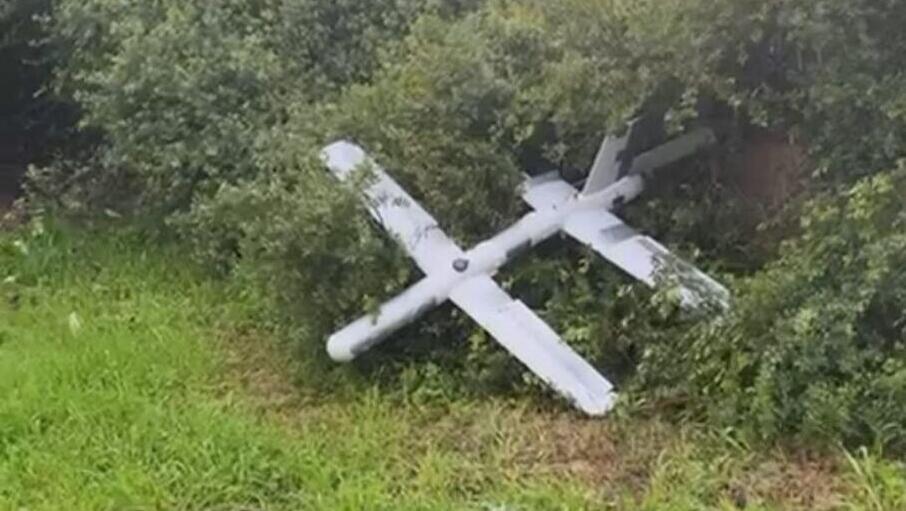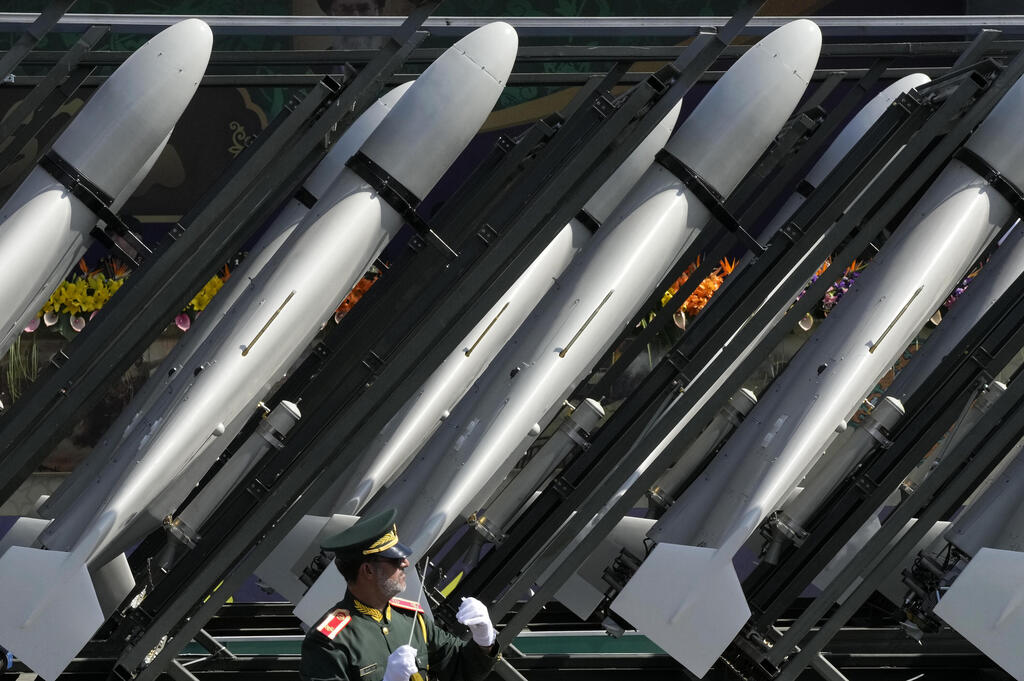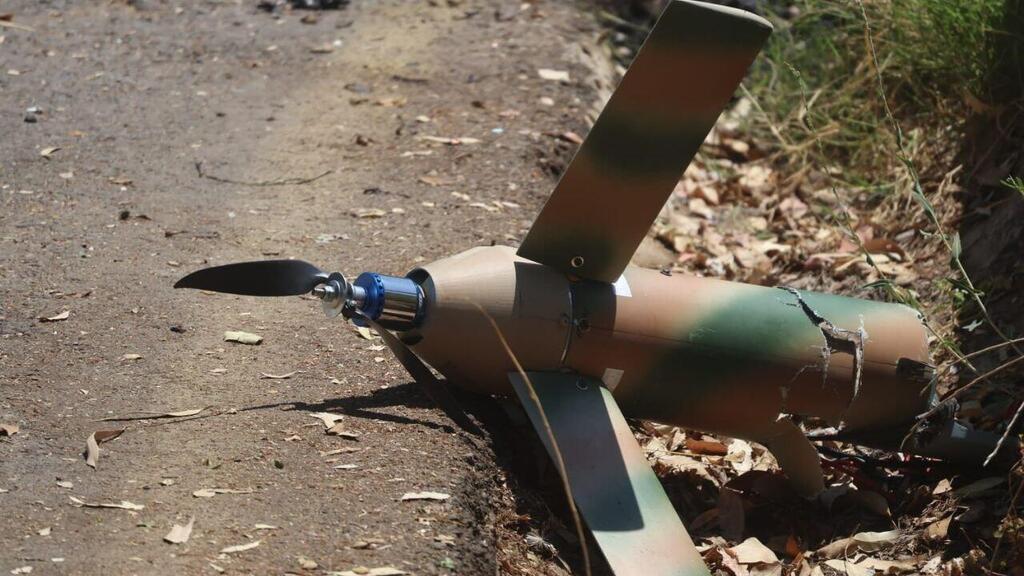Getting your Trinity Audio player ready...
Since the onset of the conflict between Israel and Iranian proxy groups in the region, unmanned aerial vehicles (UAVs) have been deployed to target Israel, putting its multilayered defense systems to the test.
The most recent such attack on Sunday night has left at least 67 people injured in the Binyamina area of central Israel. Four of the injured are in critical condition.
This follows an attack on Friday night during Yom Kippur, the holiest day in the Jewish calendar, when a drone launched from Lebanon struck a retirement home in Herzliya, also in central Israel. Although no casualties were reported, the attack caused extensive damage to the home, nearby buildings and vehicles.
Drone intercepted in northern Israel
(Video: Noam Persky, Netanel Isaac)
“This is the world’s first drone war,” according to Brig. Gen. (ret.) Zvika Haimovich, commander of the Israeli Air Force Air Defense Command from 2015 to 2018. “All of the regional players recognized the potential and the complex challenges that Israel faces in dealing with them. We will see this challenge continue.”
Data from the Institute of National Security Studies (INSS) at Tel Aviv University shows that since the conflict began a year ago, 180 drones have been launched by Houthi rebels, 150 by Shia militias in Iraq, and 170 by Iran. Most of these drones have been intercepted, many before entering Israeli airspace.
The number of drones launched by Hezbollah in Lebanon is believed to be significantly higher, though the exact figure has not been disclosed by the Israel Defense Forces. According to the Alma Research and Education Center, which specializes in terrorism studies, there have been 556 incidents involving Hezbollah drones targeting Israel, with at least 1,500 drones involved.
The Israeli military also employs UAVs in offensive operations across the region. According to the London-based Royal United Services Institute, Israel is one of the largest drone operators in the Middle East and has accounted for over 60% of global UAV exports in the past three decades.
Dr. Yehoshua Kalisky, a senior researcher at INSS, explained that UAVs are typically small, offering several advantages to their operators. Many drones used by Israel’s adversaries are produced in Iran, the primary supporter of these proxies, or in factories in Syria overseen by Iranian engineers. Israel has reportedly struck drone production sites in Syria.
“They are cheap to manufacture and easy to operate,” Kalisky said. “Their small radar signature makes them difficult to detect, and they can easily maneuver to evade interception. Their slow flight speed also makes them challenging for Israeli fighter jets to intercept.”
While single drones are occasionally launched, more frequently—particularly from Lebanon—they are fired in salvos, increasing their effectiveness and overwhelming defense systems.
Hamas, the Gaza-based terrorist organization, used drones in its surprise offensive against southern Israel on October 7 of last year, the attack that ignited the current multifront war in the Middle East. Videos on social media showed numerous Hamas operatives launching drones into Israeli territory, with some drones targeting Israeli military tanks and detonating explosives.
The use of drones by terrorist organizations has helped narrow the gap between them and conventional militaries, adding a significant new threat to their arsenals.
“They can stay in the air for a long time in order to carry out offensive, intelligence, or other missions that pose no danger to their operators,” he added. “UAVs have the ability to communicate with their ground operators.”
Alongside UAV attacks, Israel has faced heavy rocket fire. According to data released by the IDF on the first anniversary of the war, 13,200 rockets have been launched from Gaza since last October, with an additional 12,400 fired from Lebanon.
“The drone threat is not more significant or more lethal than missiles,” said Haimovich. “But there is a matter of how such an attack is perceived as an infiltration of the territory with an aircraft. It sounds much more significant and troublesome than a rocket or missile.”
Footage of the drone launched toward central Israel over the weekend spread on social media, prompting alarmed citizens to rush to bomb shelters. Israeli radars detected the UAV, triggering sirens and sending civilians to safety.
“The main challenge is the interception, not the detection,” Haimovich explained. “This is due to several levels of asymmetry.”
Haimovich noted that Hezbollah’s main advantage is the geography and topography of Lebanon, with its higher, mountainous terrain just a few kilometers from the Israeli border. There is also asymmetry in the weapons systems and technology employed by both sides.
F-35 fighter jets are deployed to counter drones, some of which are purchased on eBay or AliExpress before being modified for warfare.
“This asymmetry is part of the challenge,” Haimovich said. “State-of-the-art systems are faced with threats that are far less sophisticated. But this is the mission, and it must be dealt with.”
In recent decades, Iran has developed the Mohajer UAV, whose 10th generation was unveiled last year. It can carry up to 300 kilograms of cargo, giving it significant firepower. The Houthis in Yemen are believed to possess the Samad 3, a long-range drone with a 1,800-kilometer range, though it is highly inaccurate. In July, a Houthi drone that was not intercepted struck a building in Tel Aviv, killing one civilian and injuring 10 others.
“Israel is dealing with the threat by using its air defense systems—fighter jets and helicopters and the Iron Dome system,” said Kalisky. “In the future, it will use radar-guided anti-aircraft artillery or a laser system developed in Israel.”
Israeli defense technology firm Rafael recently unveiled the Iron Beam system, claimed to be the first laser-based system designed to intercept UAVs “quickly and effectively … with almost zero cost per interception” and causing “minimal collateral damage,” according to its website. Israeli media reports suggest it is nearly operational and expected to greatly simplify drone interceptions.
“There has definitely been a success so far, especially in thwarting drones that are launched from afar,” Kalisky said. “The UAVs from Lebanon come from a shorter distance, so when they are intercepted, it is usually already within Israeli territory which can cause secondary damage from debris of the drone and the interceptor.”
For over two years, Ukraine and Russia have faced a similar threat, with frequent and often deadly drone attacks on both sides.
The use of drones and UAVs in military operations is not new. While UAVs have been used in warfare since the 1970s, their first widespread deployment occurred in the Russo-Ukrainian War. Russia continues to receive Iranian-made drones.
Throughout the war, Ukraine’s air force has improved its drone interception capabilities, using electronic warfare, shoulder-fired air defense systems, and other publicly disclosed methods.
“The Ukrainians use slow piston-driven planes to intercept UAVs and in order to overcome their low radar signature, they use simple voice amplifiers and cellular applications to recognize the drone sound from a distance,” said Kalisky. “Ukraine’s large territory compared to that of Israel means there is a large margin of error. Israel does not have the privilege to miss an interception, and this is not an easy task.”
Israeli media have quoted Ukrainian sources claiming that Ukraine offered Israel the knowledge it gained in its war with Russia. The offer was reportedly declined, as Israel appears to prefer relying on its own solutions.
“Ukraine has developed acoustic sensor systems which help to detect drones,” said Haimovich. Drones emit a distinct humming sound, which becomes more noticeable near the ground, resembling the sound of a swarm of bees, adding to their psychological impact. “Israel’s systems and air force are more advanced, larger, and more skilled than Ukraine’s.”
In April, Israel faced a massive ballistic missile and drone attack from Iran, during which 170 drones were launched simultaneously. With support from a regional alliance led by the US, most of the drones and missiles were intercepted. One child was seriously injured, but no major damage was reported.
As the war continues, drone attacks are expected to persist, with both sides advancing their tactics, potentially fueling another arms race in the Middle East.
Get the Ynetnews app on your smartphone:







